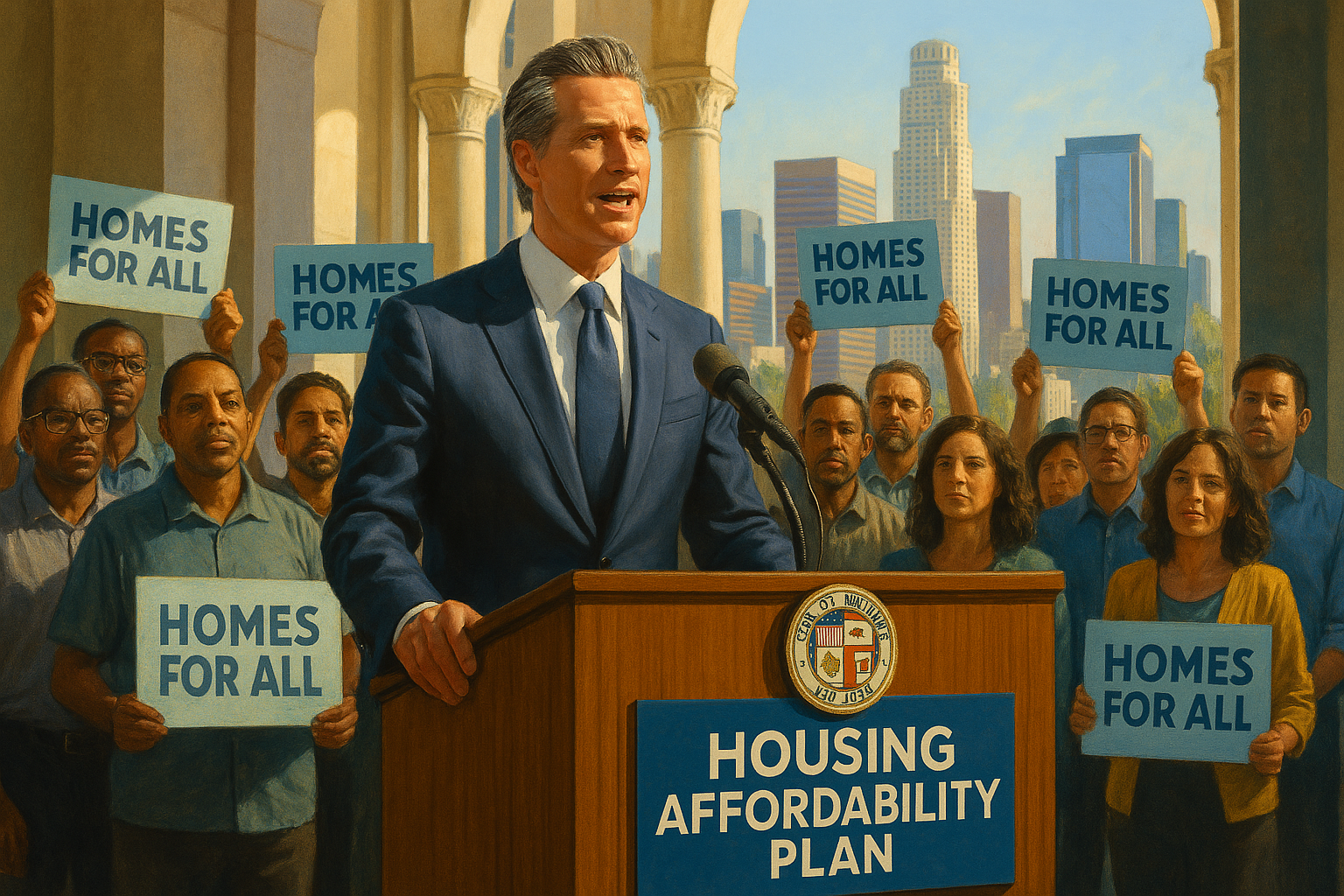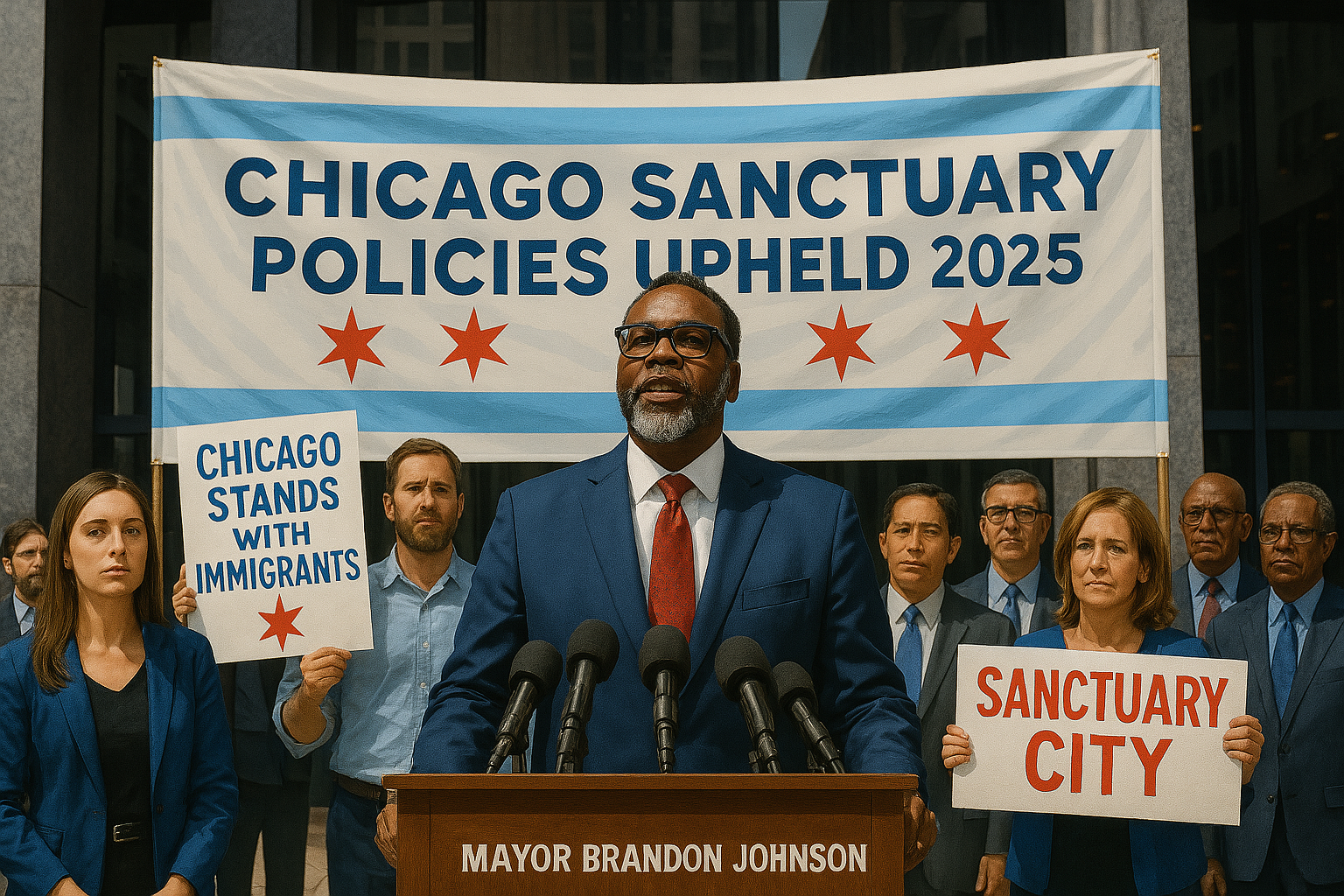California Unveils Housing Affordability Plan

California Governor Gavin Newsom will announce a $2 billion housing affordability plan on July 20, 2025, in Los Angeles, aiming to address the state’s chronic homelessness and skyrocketing home prices. The initiative, funded by state and federal grants, will build 50,000 affordable units and expand homeless shelters, targeting cities like San Francisco and San Diego. Amid national housing challenges, as seen in Indianapolis and Chicago, California’s plan seeks to set a model for urban equity, though it faces hurdles from local opposition and economic constraints.
Plan Details
The California Housing for All Act, unveiled at a Los Angeles City Hall event, allocates $1.2 billion for affordable housing construction and $800 million for shelter expansions and mental health services. The plan targets 50,000 units by 2030, with 20% reserved for formerly homeless residents. San Francisco will receive $500 million to build 10,000 units, while San Diego and Sacramento each get $300 million. The initiative includes tax credits for developers and streamlined permitting to cut costs, addressing issues raised in recent New York and New Jersey flood recovery efforts.
The plan responds to California’s housing crisis, where median home prices hit $850,000 in 2025, per the California Association of Realtors. Homelessness, exacerbated by the fentanyl crisis, affects 180,000 residents, with Los Angeles County reporting 75,000 unhoused individuals. Newsom, facing a $787 million defamation lawsuit against Fox News, framed the plan as a “moral imperative” to restore equity.
Economic and Social Context
California’s housing woes mirror national trends. Indianapolis’s tech hub and Chicago’s renewable energy summit highlight urban growth straining affordability, with Indy’s commercial rents up 10% and Chicago’s median home prices at $400,000. California’s crisis is acute, with 30% of renters spending over half their income on housing. The National Urban League’s 2025 report emphasizes equitable housing as key to closing wealth gaps, particularly for Black and Hispanic communities.
Nationally, foreign investment in U.S. housing, as seen in Miami, has driven prices, a trend California aims to counter with local focus. The state’s economy, reliant on tech and agriculture, faces disruptions from recent ICE raids and labor shortages, impacting construction. The plan’s shelter component addresses the fentanyl crisis, with 5,000 beds tied to addiction treatment, building on lessons from New Jersey’s overdose response.
Community and Industry Response
Community reactions are mixed. Los Angeles Mayor Karen Bass praised the plan, citing its potential to house 20,000 unhoused residents. However, San Francisco’s NIMBY groups oppose high-density projects, fearing neighborhood changes. On X, @CAHousingNow gained 18,000 views supporting the initiative, but @SFResidents criticized zoning changes, reflecting tensions seen in New York’s transit debates. Developers, like Related California, committed $200 million, but warn of rising material costs, up 15% since 2024.
Advocacy groups, like Housing California, are pushing for tenant protections, citing a 25% eviction rise in 2024. The plan’s mental health focus, inspired by Chicago’s community health models, has bipartisan support, but funding disputes in Sacramento could delay implementation. The real estate industry, facing scrutiny after New Jersey’s flood-related rebuilding costs, sees opportunity in streamlined permitting.
Challenges and Opportunities
The plan faces significant obstacles. Local zoning laws, particularly in wealthy coastal cities, restrict high-density projects, with San Diego rejecting 40% of permits in 2024. Construction labor shortages, worsened by immigration raids, increase costs, with builders estimating a $50 billion shortfall for the plan’s goals. Political resistance, especially from rural legislators, threatens funding, echoing debates over Chicago’s energy subsidies.
Opportunities include leveraging technology. AI-driven planning tools, used in Indianapolis’s tech hub, could optimize site selection, reducing costs by 10%. Public-private partnerships, like those in New York’s MTA upgrades, offer a model for funding. The plan’s focus on homeless veterans, with 5,000 units reserved, aligns with federal priorities, potentially unlocking $500 million in VA grants.
Economic and Social Impact
The initiative could generate $3 billion in economic activity, creating 30,000 construction jobs, per the California Economic Development Department. Tourism, vital for San Francisco, could benefit from reduced visible homelessness, with hotel bookings down 8% due to street conditions. Socially, the plan aims to reduce homelessness by 20% by 2030, but community trust hinges on equitable implementation, as seen in Chicago’s job equity efforts.
Future Outlook
The plan’s first phase, launching in 2026, includes 10,000 units in Los Angeles. Success depends on overcoming zoning and labor challenges, with a proposed state task force to streamline approvals. California’s model could inspire New York and Chicago, where housing costs are rising. Federal support, potentially tied to infrastructure bills, will be critical to scale the initiative.
Conclusion
California’s $2 billion housing plan is a bold step to address affordability and homelessness, setting a potential national model. As the state navigates opposition and economic hurdles, its success will depend on collaboration and innovation, with lessons for cities like Indianapolis and Chicago facing similar urban challenges.










